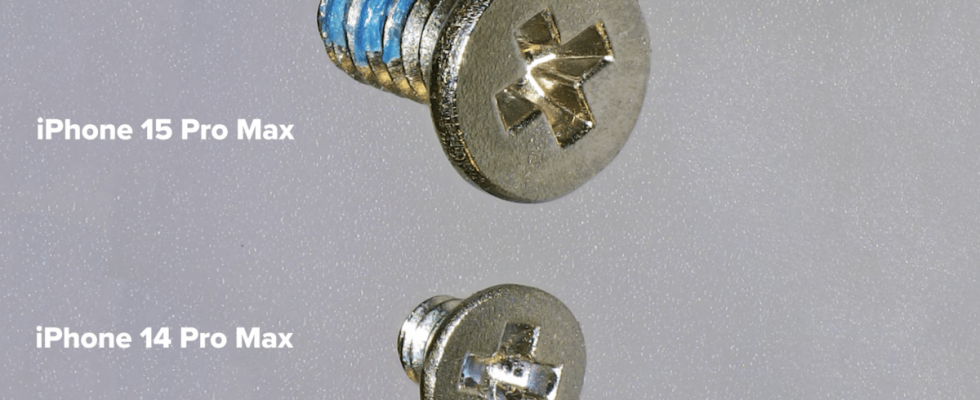The repair service provider iFixIt has taken both the iPhone 15 Pro Max and the Apple Watch Ultra 2 for a teardown. While the Ultra 2 shows some improvements in repairability, the most expensive new iPhone received poor marks: only four out of ten possible points in the “Repairability Score”. The main reason is Apple’s nailing down of the components, which forces a “calibration” using proprietary software after replacement and also prevents third-party parts from being installed without users seeing error messages.
Advertisement
Lots of screws
Basically, Apple has the iPhone 15 Pro Max Improvements made. The rear glass can now be removed comparatively easily. However, this is not enough to access the components behind it. To make this possible, numerous screws of different types and delicate cable connectors have to be loosened. You can’t really expect non-professionals to replace the battery or screen without training.
The logic board is about the size of your thumb when you finally get to it. Apple’s combination of titanium and aluminum is interesting: both are connected to each other using a special bonding process so that the outside can be made of the expensive Grade 5 titanium. However, the iPhone 15 Pro (Max) is not a real “titanium phone” – if the device and its inner frame were only made from this material, it would probably be too expensive.
Components from Qualcomm and Hynix
iFixIt has discovered DDR5 RAM from SK Hynix and the X70 baseband from Qualcomm inside the iPhone 15 Pro Max. The standard and ultra-wide-angle cameras are the same on the iPhone 15 Pro and 15 Pro Max, only the telephoto lens comes with Apple’s “Tetraprism”, its variant of the periscope lens as known from Samsung.
At the Apple Watch Ultra 2 iFixIt has now found an almost non-destructive way to disassemble the device. This is where glue meets very small screws. Special sensors for the new “Double Tap” function with the finger have not been discovered – Apple apparently does this using existing sensors including the integrated S9-SiP. The changes are otherwise limited, but the battery is slightly larger.
(bsc)

